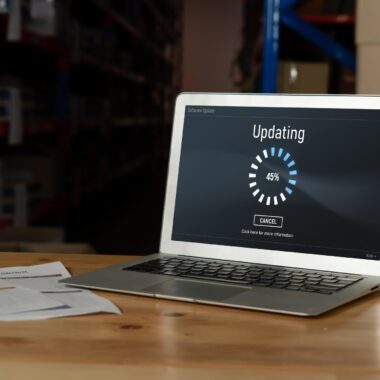Stuck in Growth Mode Because Your Tech Can’t Keep Up?
You’ve got the customers. You’ve got the ambition. But every time you try to expand your team, take on a bigger project, or explore a new market, your IT systems hold you back. Slow response times. Crashes during busy hours. Security risks that multiply with every new login.
It’s not that your business isn’t ready to scale. It’s that your infrastructure isn’t.
This is the moment where many businesses stall. They outgrow their original tech stack but try to stretch it further instead of rebuilding it to support real growth.
Why ‘Good Enough’ IT Stops Working as You Grow
When your business first started, you probably made lean tech choices. Maybe a few shared devices, cloud subscriptions, basic email, and some informal security steps. That worked when your team was small and systems were simple.
But now?
- New employees can’t get set up quickly
- Communication tools aren’t integrated
- Data lives in five different places
- The risk of downtime has become a daily concern
- You’re always reacting to tech issues instead of getting ahead of them
This is the tipping point. And the answer is not just more hardware or more licenses—it’s smarter infrastructure design guided by IT support management in Liverpool that understands how to align technology with business growth.
The Cost of Scaling Without a Scalable System
Let’s be clear. Scaling without a strong IT foundation is like building an extension on a cracked wall.
One Liverpool-based firm attempted to grow its workforce by 30 percent over six months. But because their systems lacked user access control, centralised security, or scalable cloud environments, onboarding each new hire became a bottleneck. Errors multiplied. Communication broke down. Eventually, they had to pause hiring until their IT setup was rebuilt from the ground up.
Had they started with the right IT support networking in Liverpool, the pain of that pause—and the lost opportunities that came with it—could have been avoided.
What Smarter, Scalable IT Actually Looks Like
A modern, growth-ready IT system is not about having the latest tech for the sake of it. It’s about making smart, flexible decisions that evolve with your business.
Here’s what that includes:
- Modular Infrastructure
Instead of rigid systems, opt for platforms and tools that grow with you. From user-based cloud services to scalable server options, the right setup should never box you in.
- Centralised Network Management
With a properly managed network, your devices, users, and data are no longer scattered and disconnected. Everything is monitored, optimised, and secured under one roof.
- Automation and Integration
Manual tasks slow growth. Look for ways to automate software updates, backups, and user provisioning. Integrated systems reduce duplication and simplify workflows.
- Robust Security Frameworks
Growth attracts attention. Ensure your firewalls, endpoints, and access controls are designed to scale without exposing vulnerabilities.
- Future-Focused Planning
Work with professionals who don’t just solve today’s issues but design systems that support where you’re going. That’s what high-level IT support management in Liverpool delivers.
Ask Yourself These Five Questions
Before expanding further, take a moment to reflect:
- Can we onboard five new employees in a week without IT bottlenecks?
- Is our network prepared to support remote and hybrid work securely?
- Can our current systems handle double the client volume?
- Are we protected from increased cybersecurity threats as we grow?
- Do we have visibility into all tech operations, or are we constantly guessing?
If any of these raise concerns, it’s time to rethink your infrastructure.
The ability to scale is not just about strategy, people, or ambition. It’s about having systems that carry your growth without slowing you down.
Don’t let a basic setup cap your potential. With the right IT support networking in Liverpool and scalable infrastructure, your business becomes leaner, faster, and fully equipped to rise with demand.
Think of your IT not as a back-office cost, but as a frontline growth engine—because in today’s world, that’s exactly what it is.












